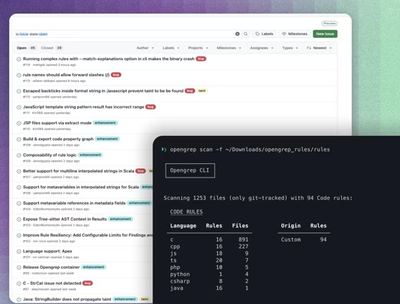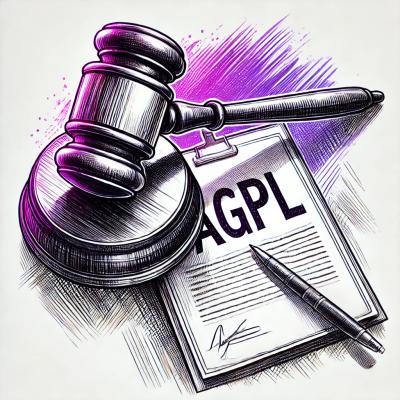demo-sdm
an Atomist demo software delivery machine
Instance of an Atomist Software Delivery Machine that can be used to
automate delivery of Atomist automatiom-client projects, like SDMs.
What is a Software Delivery Machine?
A software delivery machine is a development process in a box.
It automates all steps in the flow from commit to production
(potentially via staging environments), and many other actions, using
the consistent model provided by the Atomist API for software.
Many teams have a blueprint in their mind for how they'd like to
deliver software and ease their day to day work, but find it hard to
realize. A Software Delivery Machine makes it possible.
The concept is explained in detail in Rod Johnson's blog Why you need
a Software Delivery
Machine. This
video shows it in action.
Please see the Atomist SDM
library for explanation on
what an SDM can do. The present document describes how to get yours
running.
Get Started
This delivery machine feeds on the Atomist API. You'll need to be a
member of an Atomist workspace to run it. Create your own by
enrolling
at atomist.com.
Things work best if you install an org webhook, so that Atomist
receives events for all your GitHub repos.
Get your Software Delivery Machine
If the Atomist bot is in your Slack team, type @atomist create sdm
to have Atomist create a personalized version of this repository for
you.
Alternatively, you can fork and clone this repository.
Running
Below are instructions for running locally and on Kubernetes. See
integrations for additional prerequisites according
to the projects you're building.
Locally
This is an Atomist automation client. See run an automation
client
for instructions on how to set up your environment and run it under
Node.js.
The client logs to the console so you can see it go.
Kubernetes
You can use the Kubernetes resource files in the kube
directory as a starting point for deploying this automation in
your Kubernetes cluster.
This SDM needs write access to jobs and read-access to deployments in
its namespaces. It uses the Kubernetes "in-cluster client" to
authenticate against the Kubernetes API. Depending on whether your
cluster is using role-based access control (RBAC) or not, you
must deploy slightly differently. RBAC is a feature of more recent
versions of Kubernetes, for example it is enabled by default on GKE
clusters using Kubernetes 1.6 and higher. If your cluster
is older or is not using RBAC, the default system account provided to
all pods should have sufficient permissions to run this SDM.
Before deploying either with or without RBAC, you will need to create
a namespace for the resources and a secret with the configuration.
The only required configuration values are the teamIds and token.
The teamIds should be your Atomist team ID(s), which you can get
from the settings page for your Atomist workspace or by sending team
as a message to the Atomist bot, e.g., @atomist team, in Slack. The
token should be a GitHub personal access token with
read:org and repo scopes.
$ kubectl apply -f https://raw.githubusercontent.com/atomist/atomist-sdm/master/assets/kube/namespace.yaml
$ kubectl create secret --namespace=sdm generic automation \
--from-literal=config='{"teamIds":["TEAM_ID"],"token":"TOKEN"}'
In the above commands, replace TEAM_ID with your Atomist team ID,
and TOKEN with your GitHub token.
RBAC
If your Kubernetes cluster uses RBAC (minikube does), you can deploy with the
following commands
$ kubectl apply -f https://raw.githubusercontent.com/atomist/atomist-sdm/master/assets/kube/rbac.yaml
$ kubectl apply -f https://raw.githubusercontent.com/atomist/atomist-sdm/master/assets/kube/deployment-rbac.yaml
If you get the following error when running the first command,
Error from server (Forbidden): error when creating "rbac.yaml": clusterroles.rbac.authorization.k8s.io "sdm-role" is forbidden: attempt to grant extra privileges: [...] user=&{YOUR_USER [system:authenticated] map[]} ownerrules=[PolicyRule{Resources:["selfsubjectaccessreviews"], APIGroups:["authorization.k8s.io"], Verbs:["create"]} PolicyRule{NonResourceURLs:["/api" "/api/*" "/apis" "/apis/*" "/healthz" "/swagger-2.0.0.pb-v1" "/swagger.json" "/swaggerapi" "/swaggerapi/*" "/version"], Verbs:["get"]}] ruleResolutionErrors=[]
then your Kubernetes user does not have administrative privileges on
your cluster. You will either need to ask someone who has admin
privileges on the cluster to create the RBAC resources or try to
escalate your privileges with the following command.
$ kubectl create clusterrolebinding cluster-admin-binding --clusterrole cluster-admin \
--user YOUR_USER
If you are running on GKE, you can supply your user name using the
gcloud utility.
$ kubectl create clusterrolebinding cluster-admin-binding --clusterrole cluster-admin \
--user $(gcloud config get-value account)
Then run the command to create the kube/rbac.yaml resources again.
Without RBAC
To deploy on clusters without RBAC, run the following commands
$ kubectl apply -f https://raw.githubusercontent.com/atomist/atomist-sdm/master/assets/kube/deployment-no-rbac.yaml
If the logs from the pod have lines indicating a failure to access the
Kubernetes API, then the default service account does not have read
permissions to pods and you likely need to deploy using RBAC.
Using the SDM
Once this SDM is running, here are some things to do:
Push to an existing repository
If you have any Java or Node projects in your GitHub org, try linking
one to a Slack channel (@atomist link repo), and then push to it.
You'll see Atomist react to the push, and the SDM might have some
Goals it can complete.
Customize
Every organization has a different environment and different
needs. Your software delivery machine is yours: change the code and do
what helps you.
Atomist is about developing your development experience by using
your coding skills. Change the code, restart, and see your new
automations and changed behavior across all your projects, within
seconds.
Kubernetes
The kubernetesSoftwareDevelopmentMachine included here deploys to your
Kubernetes cluster, using
k8-automation, which you
must run in your cluster. To deploy to Kubernetes using this SDM and
k8-automation, set the MACHINE_NAME environment variable to
k8sMachine before starting the SDM.
Support
General support questions should be discussed in the #support
channel in our community Slack team
at atomist-community.slack.com.
If you find a problem, please create an issue.
Development
You will need to install [node][] to build and test this project.
Build and Test
| Command | Reason |
|---|
npm install | install all the required packages |
npm run build | lint, compile, and test |
npm start | start the Atomist automation client |
npm run autostart | run the client, refreshing when files change |
npm run lint | run tslint against the TypeScript |
npm run compile | compile all TypeScript into JavaScript |
npm test | run tests and ensure everything is working |
npm run autotest | run tests continuously |
npm run clean | remove stray compiled JavaScript files and build directory |
Release
Releases are handled via the SDM itself. Just press the release
button in Slack or the Atomist dashboard.
Created by Atomist.
Need Help? Join our Slack team.



